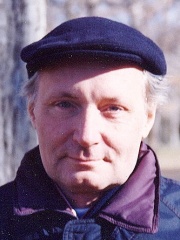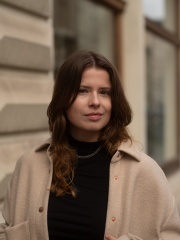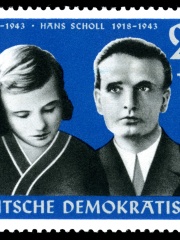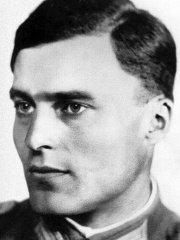
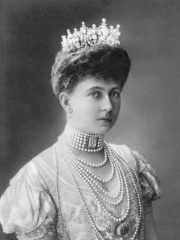
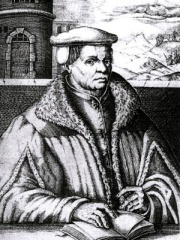
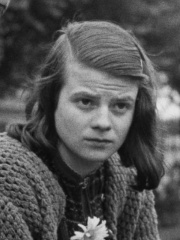
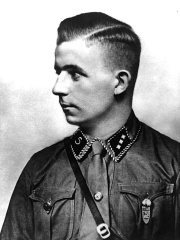
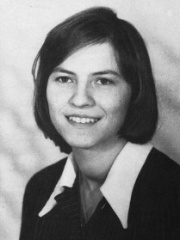
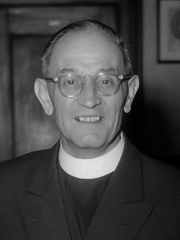
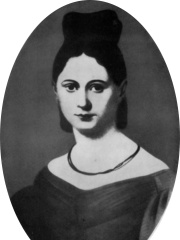
The Most Famous
SOCIAL ACTIVISTS from Germany
This page contains a list of the greatest German Social Activists. The pantheon dataset contains 840 Social Activists, 37 of which were born in Germany. This makes Germany the birth place of the 5th most number of Social Activists behind United Kingdom, and Russia.
Top 10
The following people are considered by Pantheon to be the top 10 most legendary German Social Activists of all time. This list of famous German Social Activists is sorted by HPI (Historical Popularity Index), a metric that aggregates information on a biography's online popularity. Visit the rankings page to view the entire list of German Social Activists.

1. Claus von Stauffenberg (1907 - 1944)
With an HPI of 79.83, Claus von Stauffenberg is the most famous German Social Activist. His biography has been translated into 71 different languages on wikipedia.
Oberst Claus Philipp Maria Justinian Schenk Graf von Stauffenberg (German: [ˈklaʊs fɔn ˈʃtaʊfn̩bɛʁk] ; 15 November 1907 – 21 July 1944) was a German army officer who is best known for his failed attempt on 20 July 1944 to assassinate Adolf Hitler at the Wolf's Lair, part of Operation Valkyrie, a plan that would have seen the arrest of the Nazi leadership in the wake of Hitler's death and an earlier end to World War II. Graf von Stauffenberg took part in the Invasion of Poland, the 1941–42 invasion of the Soviet Union in Operation Barbarossa and the Tunisian campaign during the Second World War. Alongside Major Generals Henning von Tresckow and Hans Oster, he became a key figure in the German resistance to Nazism within the Wehrmacht. On 20 July 1944, Stauffenberg's assassination attempt failed, the explosive he had placed only dealing Hitler minor injuries. The conspirators were arrested, and many of them executed, including Stauffenberg on the day after the attempt. His wife Nina was also arrested, giving birth to their fifth child Konstanze while imprisoned. Their children also included Berthold, who followed in his father's footsteps as a military man, and politician Franz-Ludwig.

2. Sophia of Prussia (1870 - 1932)
With an HPI of 77.39, Sophia of Prussia is the 2nd most famous German Social Activist. Her biography has been translated into 41 different languages.
Sophia of Prussia (Sophie Dorothea Ulrike Alice, Greek: Σοφία Δωροθέα Ουλρίκη Αλίκη, romanized: Sofía Dorothéa Oulríki Alíki; 14 June 1870 – 13 January 1932) was Queen of Greece from 18 March 1913 to 11 June 1917 and again from 19 December 1920 to 27 September 1922 as the wife of King Constantine I. A member of the House of Hohenzollern and child of Frederick III, German Emperor, Sophia received a liberal and Anglophile education, under the supervision of her mother Victoria, Princess Royal. In 1889, less than a year after the death of her father, she married her third cousin Constantine, heir apparent to the Greek throne. After a difficult period of adaptation in her new country, Sophia gave birth to six children and became involved in the assistance to the poor, following in the footsteps of her mother-in-law, Queen Olga. However, it was during the wars which Greece faced during the end of the 19th and the beginning of the 20th century that Sophia showed the most social activity: she founded field hospitals, oversaw the training of Greek nurses, and treated wounded soldiers. However, Sophia was hardly rewarded for her actions, even after her grandmother Queen Victoria decorated her with the Royal Red Cross after the Thirty Days' War: the Greeks criticized her links with Germany. Her eldest brother, German Emperor William II, was indeed an ally of the Ottoman Empire and openly opposed the construction of the Megali Idea, which could establish a Greek state that would encompass all ethnic Greek-inhabited areas. During World War I, the blood ties between Sophia and the Emperor also aroused the suspicion of the Triple Entente, which criticized Constantine I for his neutrality in the conflict. After imposing a blockade of Greece and supporting the rebel government of Eleftherios Venizelos, causing the National Schism, France and its allies deposed Constantine in June 1917. Sophia and her family then went into exile in Switzerland. Sophia's second son, Alexander, replaced his father on the throne. At the same time, Greece entered the war alongside the Triple Entente, which allowed for impressive, but eventually temporary, territorial gains. After the outbreak of the Greco-Turkish War in 1919 and the untimely death of Alexander the following year, the Venizelists abandoned power, allowing the royal family to return to Athens. However, the defeat of the Greek army against the Turkish troops of Mustafa Kemal forced Constantine to abdicate in 1922, at which point his eldest son became King George II. Sophia and her family were then forced to a new exile, and settled in Italy, where Constantine died one year later, in 1923. With the proclamation of the Republic in Athens the following year, Sophia spent her last years alongside her family, before dying of cancer in Germany in 1932 at the age of 61.

3. Thomas Müntzer (1489 - 1525)
With an HPI of 74.02, Thomas Müntzer is the 3rd most famous German Social Activist. His biography has been translated into 49 different languages.
Thomas Müntzer (c. 1489 – 27 May 1525) was a German preacher and theologian of the early Reformation whose opposition to both Martin Luther and the Catholic Church led to his open defiance of late-feudal authority in central Germany. Müntzer was foremost amongst those reformers who took issue with Luther's compromises with feudal authority. He was a leader of the German peasant and plebeian uprising of 1525 commonly known as the German Peasants' War. In 1514, Müntzer became a Catholic priest in Braunschweig, where he began to question the teachings and practices of the Catholic Church. He then became a follower and acquaintance of Martin Luther, who recommended him for a post in Zwickau. His beliefs became increasingly spiritual and apocalyptic; by his arrival at Allstedt in 1523 he had completely broken with Luther. Amidst the peasant uprisings in 1525, Müntzer organized an armed militia in Mühlhausen. He was captured after the Battle of Frankenhausen, tortured and finally executed. Few other figures of the German Reformation raised as much controversy as Müntzer, which continues to this day. A complex and unusual character, he is now regarded as a significant personality in the early years of the German Reformation and the history of European revolutionaries. Almost all modern studies stress the necessity of understanding his revolutionary actions as a consequence of his theology: Müntzer believed that the end of the world was imminent and that it was the task of the true believers to aid God in ushering in a new era of history.

4. Sophie Scholl (1921 - 1943)
With an HPI of 73.94, Sophie Scholl is the 4th most famous German Social Activist. Her biography has been translated into 63 different languages.
Sophia Magdalena Scholl (9 May 1921 – 22 February 1943) was a German student and anti-Nazi political activist, active in the White Rose non-violent resistance group in Nazi Germany. Raised in a politically engaged family, Scholl initially joined the Bund Deutscher Mädel, the female branch of the Hitler Youth, but later became critical of the Nazi regime. Influenced by philosophy, theology, and the writings of Theodor Haecker, she became involved in passive resistance efforts alongside her brother, Hans, and fellow students. The White Rose distributed leaflets calling for opposition to the Nazi state, citing ethical and philosophical arguments against its policies. In February 1943, after being caught distributing leaflets at the University of Munich, she and her brother Hans were arrested by the Gestapo, interrogated, and convicted of high treason in a show trial presided over by Roland Freisler. They were sentenced to death and executed by guillotine. After her death, copies of the final White Rose leaflet were air-dropped over Germany by the Allies. In the decades following her death, numerous schools, streets, and memorials have been named in her and her brother's honor for their role in anti-Nazi resistance. Her story has been depicted in several films, books, and other media, including the Oscar nominated film Sophie Scholl – The Final Days.
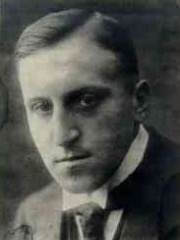
5. Carl von Ossietzky (1889 - 1938)
With an HPI of 72.58, Carl von Ossietzky is the 5th most famous German Social Activist. His biography has been translated into 62 different languages.
Carl von Ossietzky (German: [ˈkaʁl fɔn ɔˈsi̯ɛtskiː] ; 3 October 1889 – 4 May 1938) was a German journalist and pacifist. He was the recipient of the 1935 Nobel Peace Prize for his work in exposing the clandestine German rearmament. As editor-in-chief of the magazine Die Weltbühne, Ossietzky published a series of exposés in the late 1920s, detailing Germany's violation of the Treaty of Versailles by rebuilding an air force (the predecessor of the Luftwaffe) and training pilots in the Soviet Union. He was convicted of treason and espionage in 1931 and sentenced to eighteen months in prison but was granted amnesty in December 1932. Ossietzky continued to be a vocal critic against German militarism after the Nazis' rise to power. Following the 1933 Reichstag fire, Ossietzky was again arrested and sent to the Esterwegen concentration camp near Oldenburg. His brutal torture after his arrest was attested by International Red Cross. In 1936, he was awarded the 1935 Nobel Peace Prize, but was forbidden from travelling to Norway to accept the prize. After enduring years of mistreatment in Nazi concentration camps, Ossietzky died of tuberculosis in 1938 in a Berlin hospital after more than five years of imprisonment.

6. Horst Wessel (1907 - 1930)
With an HPI of 71.43, Horst Wessel is the 6th most famous German Social Activist. His biography has been translated into 41 different languages.
Horst Ludwig Georg Erich Wessel (9 October 1907 – 23 February 1930) was a member of the Sturmabteilung (SA), the paramilitary wing of the Nazi Party, who became a propaganda symbol in Nazi Germany following his murder in 1930 by two members of the Communist Party of Germany (KPD). After his death, Nazi Propaganda Minister Joseph Goebbels elevated him into a martyr for the Nazi Party. Wessel first joined a number of youth groups and extreme right-wing paramilitary groups, but later resigned from them and joined the SA, the original paramilitary wing of the Nazi Party. He rose to command several SA squads and districts. On 14 January 1930, he was shot in the head by two members of the Communist Party of Germany. Albrecht "Ali" Höhler was arrested and charged with his murder. Höhler was initially sentenced to six years in prison but was forcibly removed from jail and killed by the SA after the Nazis came to power in September 1933. Wessel's funeral was given wide attention in Berlin, with many of the Nazi elite in attendance. After his death, he became a propaganda symbol in Nazi Germany. A march for which he had written the lyrics was renamed the "Horst-Wessel-Lied" ("Horst Wessel Song"), and became the official anthem of the Nazi Party. After Adolf Hitler came to national power in 1933, the song became the co-national anthem of Germany, along with the first verse of the previous "Deutschlandlied", or "Deutschland Deutschland über alles"; nowadays the third verse "Einigkeit und Recht und Freiheit" is used.

7. Anneliese Michel (1952 - 1976)
With an HPI of 71.08, Anneliese Michel is the 7th most famous German Social Activist. Her biography has been translated into 40 different languages.
Anna Elisabeth "Anneliese" Michel (21 September 1952 – 1 July 1976) was a German woman who underwent 67 Catholic exorcism rites during the year before her death. She died of malnutrition, for which her parents and the priest who performed the exorcism were convicted of negligent homicide. She was diagnosed with epileptic psychosis (temporal lobe epilepsy) and manic depression (bipolar disorder), and had a history of psychiatric treatment that proved ineffective. When Michel was 16, she experienced a seizure and was diagnosed with psychosis caused by temporal lobe epilepsy. Shortly thereafter, she was diagnosed with depression and was treated by a psychiatric hospital. By the time that she was 20, she had become intolerant of various religious objects and began to hear voices. Her condition worsened despite medication, and she became suicidal, also displaying other symptoms, for which she took medication as well. After taking psychiatric medications for five years failed to improve her symptoms, Michel and her family became convinced she was possessed by a demon. As a result, her family appealed to the Catholic Church for an exorcism. While rejected at first, two priests got permission from the local bishop, Josef Stangl, to perform the exorcism in 1975. The priests began performing exorcisms and the family stopped consulting doctors. Michel stopped eating food and died of malnourishment and dehydration after 67 exorcism sessions. Michel's parents and the two Catholic priests were found guilty of negligent homicide and were sentenced to six months in jail (reduced to three years of probation), as well as a fine. Several religious horror films are based on her story, including the 2005 film The Exorcism of Emily Rose, the 2006 film Requiem, and the 2011 film Anneliese: The Exorcist Tapes.

8. Martin Niemöller (1892 - 1984)
With an HPI of 70.95, Martin Niemöller is the 8th most famous German Social Activist. His biography has been translated into 50 different languages.
Friedrich Gustav Emil Martin Niemöller (German: [ˈmaʁtiːn ˈniːmœlɐ] ; 14 January 1892 – 6 March 1984) was a German theologian and Lutheran pastor. He opposed the Nazi regime during the late 1930s, and was sent to a concentration camp for his affiliation with the Confessing Church and his opposition to state involvement in Church. After the war, he went on tour around the world to condemn the Nazi cause and educate people about the importance of human rights. In 1946 he published the confessional piece "First they came…". Niemöller was a national conservative and initially a supporter of Adolf Hitler and a self-identified antisemite. He became one of the founders of the Confessing Church, which opposed the Nazification of German Protestant churches. He opposed the Nazis' Aryan Paragraph. For his opposition to the Nazis' state control of the churches, Niemöller was imprisoned in Sachsenhausen concentration camp and Dachau concentration camps from 1938 to 1945. He narrowly escaped execution. After his imprisonment, he expressed his deep regret about not having done enough to help victims of the Nazis. He turned away from his earlier nationalistic beliefs and was one of the initiators of the Stuttgart Declaration of Guilt. From the 1950s on, he was a vocal pacifist and anti-war activist, and vice-chair of War Resisters' International from 1966 to 1972. He met with Ho Chi Minh during the Vietnam War and was a committed campaigner for nuclear disarmament.

9. Jenny von Westphalen (1814 - 1881)
With an HPI of 70.87, Jenny von Westphalen is the 9th most famous German Social Activist. Her biography has been translated into 34 different languages.
Johanna Bertha Julie Jenny Edle von Westphalen (German: [fɔn ˈvɛstˌfaːlən]; 12 February 1814 – 2 December 1881) was a German theatre critic and political activist. She married the philosopher and political economist Karl Marx in 1843.
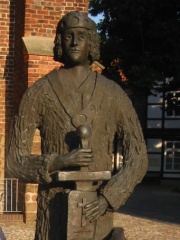
10. Widukind (755 - 810)
With an HPI of 70.51, Widukind is the 10th most famous German Social Activist. His biography has been translated into 36 different languages.
Widukind, also known as Wittekind and Wittikund, was a leader of the Saxons and the chief opponent of the Frankish king Charlemagne during the Saxon Wars from 777 to 785. Charlemagne ultimately prevailed, organized Saxony as a Frankish province, massacred thousands of Saxon nobles, and ordered conversions of the pagan Saxons to Christianity. In later times, Widukind became a symbol of Saxon independence and a figure of legend. He is also venerated as a Blessed in the Catholic Church.
People
Pantheon has 38 people classified as German social activists born between 755 and 1996. Of these 38, 3 (7.89%) of them are still alive today. The most famous living German social activists include Eugen Drewermann, Carola Rackete, and Luisa Neubauer. The most famous deceased German social activists include Claus von Stauffenberg, Sophia of Prussia, and Thomas Müntzer. As of April 2024, 1 new German social activists have been added to Pantheon including Carola Rackete.
Living German Social Activists
Go to all RankingsEugen Drewermann
1940 - Present
HPI: 55.85
Carola Rackete
1988 - Present
HPI: 42.37
Luisa Neubauer
1996 - Present
HPI: 41.06
Deceased German Social Activists
Go to all RankingsClaus von Stauffenberg
1907 - 1944
HPI: 79.83
Sophia of Prussia
1870 - 1932
HPI: 77.39
Thomas Müntzer
1489 - 1525
HPI: 74.02
Sophie Scholl
1921 - 1943
HPI: 73.94
Carl von Ossietzky
1889 - 1938
HPI: 72.58
Horst Wessel
1907 - 1930
HPI: 71.43
Anneliese Michel
1952 - 1976
HPI: 71.08
Martin Niemöller
1892 - 1984
HPI: 70.95
Jenny von Westphalen
1814 - 1881
HPI: 70.87
Widukind
755 - 810
HPI: 70.51
Hans Scholl
1918 - 1943
HPI: 68.26
Marianne Bachmeier
1950 - 1996
HPI: 67.91
Newly Added German Social Activists (2025)
Go to all RankingsOverlapping Lives
Which Social Activists were alive at the same time? This visualization shows the lifespans of the 25 most globally memorable Social Activists since 1700.

